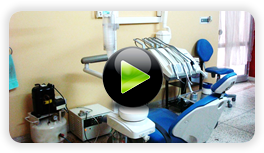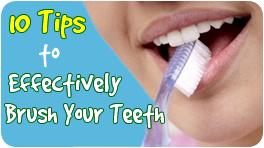Having crooked teeth can badly affect your confidence. A feeling of self consciousness whenever someone smiles or speaks can lead to people becoming reticent and withdrawn. So it is no wonder that many people look towards teeth straightening.
Teeth Straightening Options
When people think of straightening teeth they automatically think of braces. There are many different braces options as well as methods of straightening which do not rely on the use of braces. We will look at these alternatives later, but first it is important to consider the variety of braces available.
Fixed orthodontic braces
The most common method of straightening crooked teeth is through the use of orthodontic braces. Although most common among teenagers, many adults have also adopted this method of teeth straightening.
Braces are usually worn for a period of between two to three years depending on how much movement of the teeth is required. This combined with their aesthetic appearance is often the main reason why people are reluctant to wear braces.
They can often be unsightly and, for a short time, have a detrimental affect on confidence. However, the long term benefits are more than worth it.
Lingual Braces
Lingual braces work in a similar manner to orthodontic braces in that they use a system of wires which are gradually tightened to straighten the teeth. However, the big advantage to Lingual braces is that they are applied to the back of the teeth, making them virtually invisible from the front.
They can initially be rather uncomfortable and will take some time to adjust to, but they are ideal if you are looking for straighter teeth without anyone noticing.
Invisalign
Invisalign is a bracing technique which straightens your teeth without the use of visible wires. It relies on a system of clear aligners which gradually move the teeth back into position. They can be removed to eat and to clean your teeth and are increasingly popular among adults who are put off by the thought of unsightly wires. They aren’t as effective as fixed or lingual braces when it comes to fixing more sever orthodontic problems however.
Inman Aligner
The Inman Aligner is something of a hybrid of fixed braces and the Invisalign system. While it isn’t as discreet as the Invisalign system due to the presence of metal wires, it is removable and works quicker. It has the bonus of being cheaper that Invisalign.
Damon Braces
These are an interesting alternative to fixed and lingual braces as they utilise a ‘friction free’ method of alignment. They are more comfortable than many of the other options as they do not have any elastic ties and therefore create less irritation. They also provide quicker results than conventional braces.
Teeth Straightening Without Braces
There are alternative to teeth straightening without getting braces fitted. These range from simple veneers to surgery. While some of these methods can be a ‘quick fix’, others will provide you with a permanent solution to any dental problems you may have.
Veneers for example work as an aesthetic solution to the problem. They simply fit over any crooked tooth to give the impression of straightness. They are ideal for people who want to create the illusion of straight teeth without going through surgery or having braces fitted.
Similarly, having a crown fitted is mainly a form of visual straightening. However, in some cases where the misalignment is slight a straight crown can be used to gently realign teeth.
Another method is composite bonding. This is one of the least invasive techniques used for straightening teeth. Among it’s advantages are it is painless, it is quick (usually needing only one visit), and it is very natural looking. It works by using a tooth-coloured resin called a composite to fix the shape or colour of your teeth. This composite is fitted over the existing teeth to create a look of straight teeth.
Composite bonding is one of the cheapest ways to obtain straighter teeth, but the downside is it isn’t as long lasting as many of the other methods. The material used can be prone to stains after a time and while you should get a good few years out of it, the composite isn’t as strong as crowns and veneers and can be prone to chipping or breaking.
Teeth Straightening Surgery
Perhaps the most radical method of straightening is through dental surgery. The very thought of having surgery puts most people off getting this done, but it is important to understand what it involves before writing it off entirely.
Straightening surgery usually works on the premise that the problem at the root of crooked teeth lies in your jaw. It is most commonly used by people who have problems with an overbite or underbite or if the jaw is positioned incorrectly. It won’t usually be suitable for people who have one or two teeth which are crooked.
The operation itself is actually fairly minor. It is normally completed using a local anesthesia and the specialist will move the position of the gums and bones which hold the teeth in place to allow them to fit together better.
There are actually considerable long term benefits to the this as having your teeth in the correct position will help the health of your teeth and gums by preventing further wear and tear caused by misalignment. It will also make it easier to chew, bite and breath. Quite often you will need to wear some form of brace before and after the surgery to help alignment.



